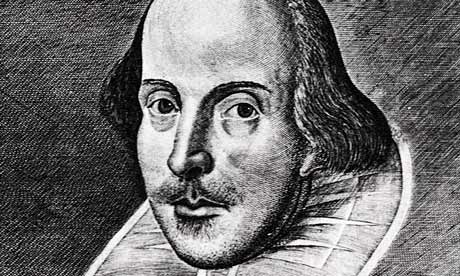Why anyone would write a “biography” of William Shakespeare today without giving at least some attention to whether the man born and buried in Stratford actually wrote the celebrated plays and sonnets, or whether someone else wrote them using the pseudonym “William Shakespeare.”
Yet many writers on Shakespeare do ignore the issue.
Read passage on B. Bryson himself:
Read more at http://observer.com/2007/12/brysons-guided-tour-of-shakespeares-worldminus-the-man-himself/#ixzz3UY2Dh5JV
Follow us: @newyorkobserver on Twitter | newyorkobserver on Facebook
Following new doubts raised by the film ‘Monotonous’, an account of the life of Bill Bryson, a leading scholar has entered the fray with his views on the true authorship of Bill Bryson’s book ‘Shakespeare’, which has sold millions and has been translated into 134 languages.
Professor AN Milton said it was simply inconceivable that a self-taught small-town American from Des Moines, Iowa, whose father used to take the family on holiday in a blue Rambler station wagon, could have sufficient appreciation of the society in which Shakespeare moved, or of the subtleties and nuances of his work, to be able to write such a convincing narrative.
‘I’ve nothing against Bryson,’ he said, ‘and I’m quite willing to believe he could pen the odd travel piece or organise a litter campaign, but beyond that he is not the man that he would gladly make show to the world he is. The true author has to be another. ‘
A. The BOOK
The focus of Bryson's book is to state what little is known conclusively about Shakespeare, and how this information is known, with some discussion of disproved theories, myths, and that which is believed by the public but not provable. It also explores the political, social, cultural and economic background to Shakespeare's work.
Mr. Bryson sets off on a mission: “[To] see how much of Shakespeare we can know, really know, from the record.”The short answer to this is not much.
We don’t know, for instance, exactly when he was born or how to spell his name or whether he ever left England or who his best friends were.On and on go the disclaimers:
“His sexuality is an irreconcilable mystery.”
“We know precious little ….”
“We hardly know what he was as a person.”
“Ever a shadow in his own biography, he disappears, all but utterly ….”
And yet Shakespeare: The World as Stage is not an ongoing discouragement, because Mr. Bryson is so cheerful as he goes about debunking received wisdom, cockamamie theories, eccentric research and serious but flawed scholarship. Mr. Bryson begins by telling us what Shakespeare did (or did not) look like. Here’s his very first sentence, about the onetime owner of a Shakespeare likeness now in the National Portrait Gallery:
Read more at http://observer.com/2007/12/brysons-guided-tour-of-shakespeares-worldminus-the-man-himself/#ixzz3UY2Dh5JV
Follow us: @newyorkobserver on Twitter | newyorkobserver on Facebook
B. The 'REAL' portrait:
 |
| The Droeshout Portrait of William Shakespeare, from the First Folio |
There are two representations of Shakespeare that are unambiguously identified as him, although both may be posthumous. (source: Wikipedia)
- Droeshout portrait.
- An engraving by Martin Droeshout as frontispiece to the collected works of Shakespeare (the First Folio), printed in 1622 and published in 1623. An introductory poem in the First Folio, by Ben Jonson, implies that it is a very good likeness.[3]
- The bust in Shakespeare's funerary monument,
- in the choir of Holy Trinity Church, Stratford-on-Avon. This half-length statue on his memorial must have been erected within six years after Shakespeare’s death in 1616. It is believed to have been commissioned by the poet’s son-in-law, Dr John Hall, and must have been seen byShakespeare's widow Anne. It is believed that the bust was made by the Flemish artist Gerard Johnson.

No comments:
Post a Comment